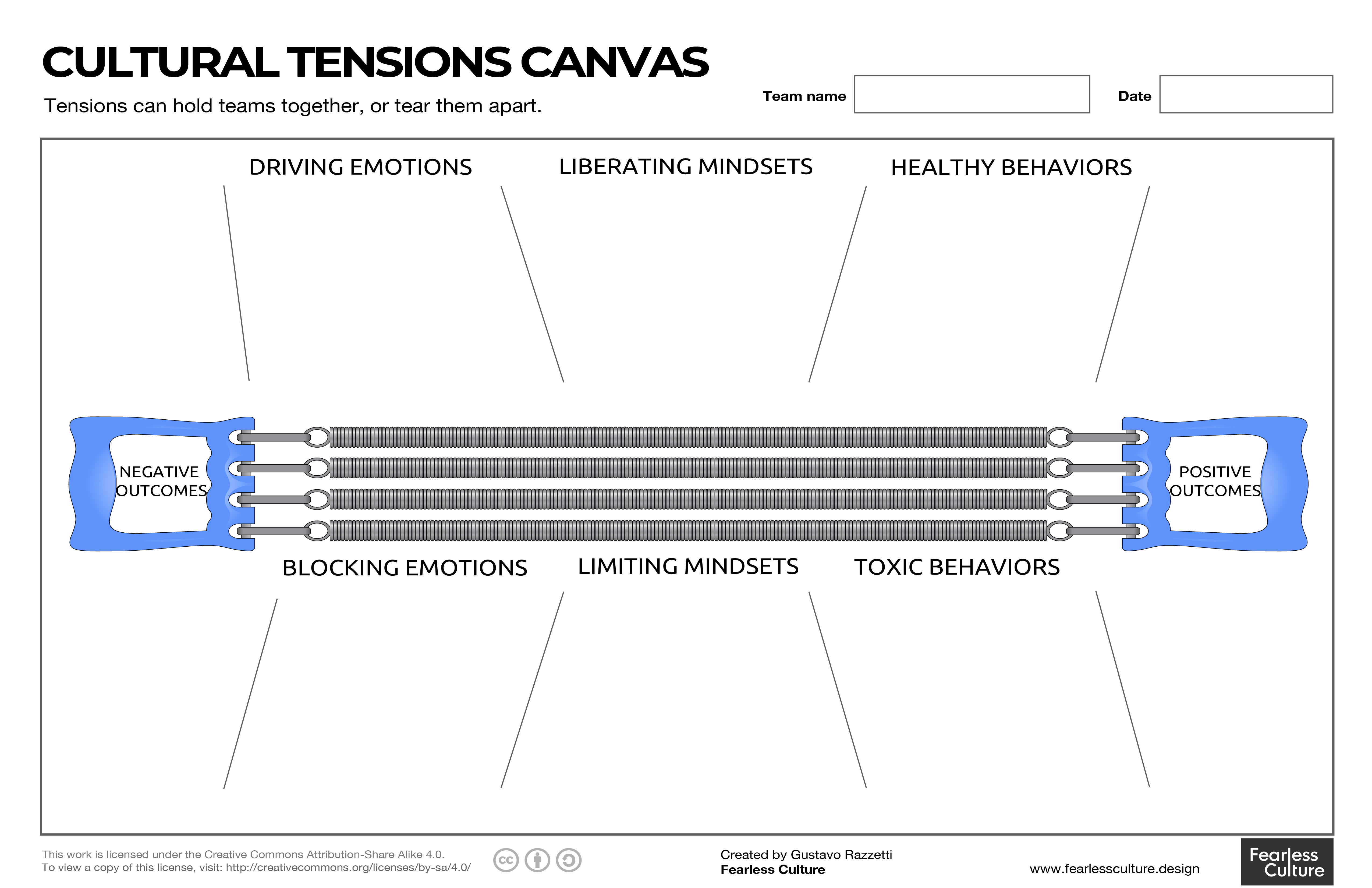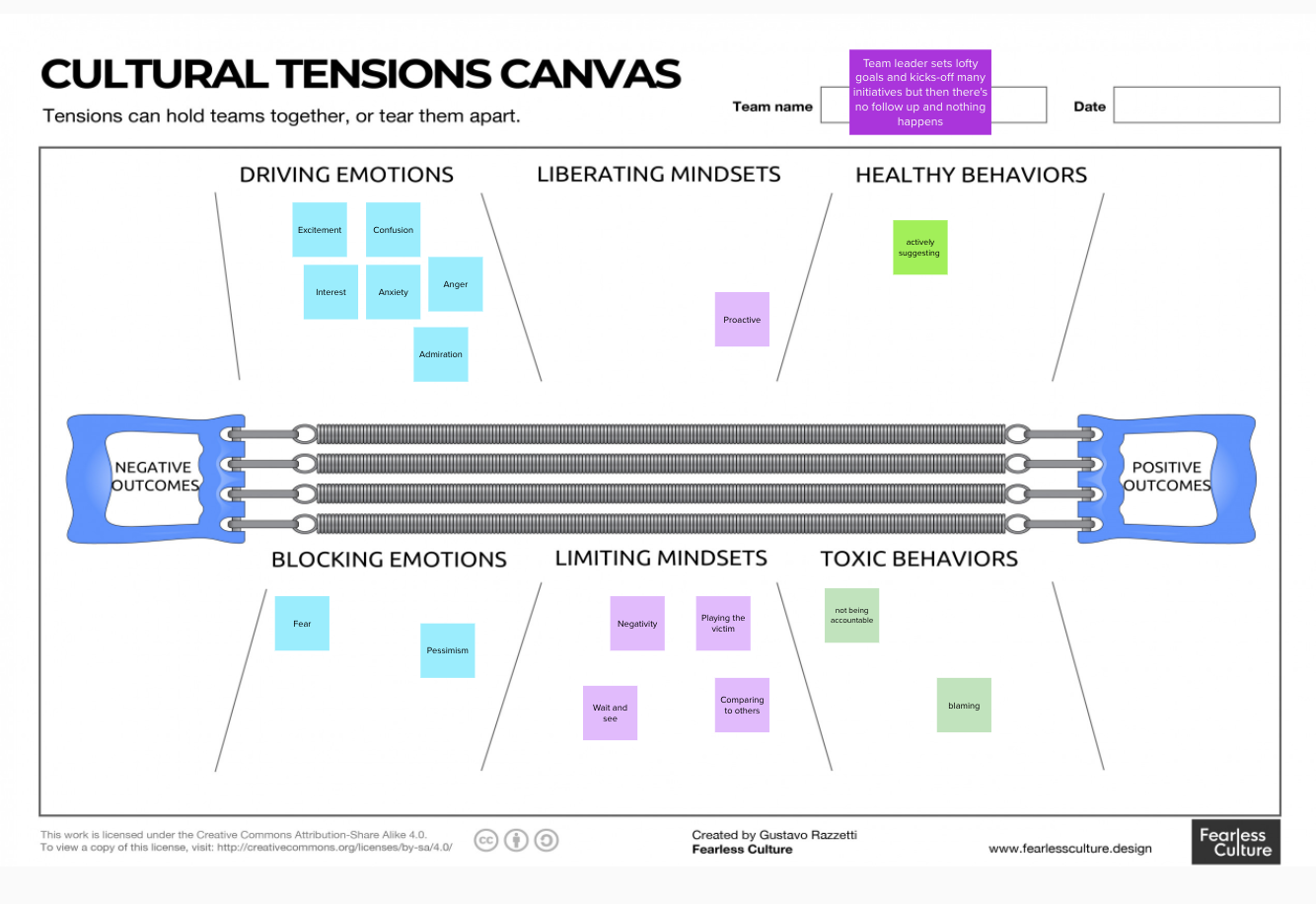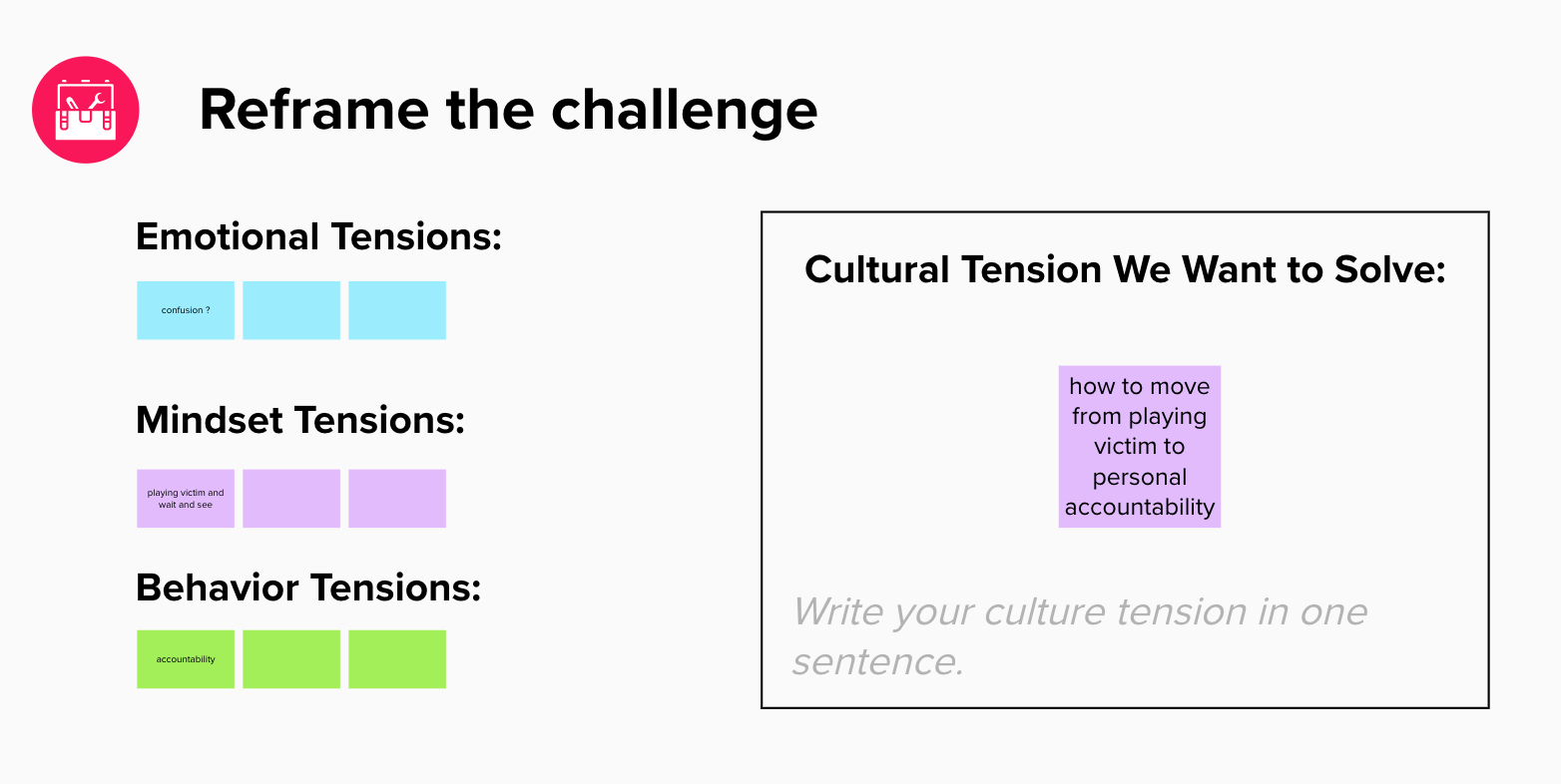
Cultural tensions can bring teams together or break them apart. The culture tensions canvas will help resolve yours.

Get in touch and transform your culture today.
Reach out using the form below and we’ll respond as soon as possible. We appreciate your interest.

Cultural tensions can bring teams together or break them apart. The culture tensions canvas will help resolve yours.

By Gustavo Razzetti
July 9, 2019
The word tension has a negative connotation. However, it’s the tension between opposite forces that holds things – and organizations – together.
Take suspension bridges, for example. The bridge tower supports the majority of the weight. The supporting cables, on the other hand, receive the tension forces to keep the bridge safe and sound.
The Cultural Tensions Canvas will help you create a blueprint of the culture of a team, division, or organization. Capture existing tensions and identify how they affect performance. Uncover the different emotions, mindsets, and behavior as well as the positive and negative results they create.

This tool serves two purposes.
Firstly, it will help the team align on the current situation to discover what’s working, what’s not working, which things move everyone forward, and which things hinder productivity. Secondly, it will help prioritize and resolve ongoing issues. You can use the Culture Experiment Canvas to start prototyping and testing possible solutions. In short, the Cultural Tensions Canvas will help you resolve tensions and move your team forward.
The best way to use this Cultural Tension Canvas is to work as a team. Considering that you want to integrate diverse perspectives, let individuals work on their own first, before incorporating all thoughts into one canvas.
Give participants 10 minutes to capture their ideas on sticky notes. Then, one by one, they should read them aloud and add theirs to a large, shared canvas. It’s better to tackle one section at-a-time.
Once everyone is done, this will spark a conversation. The facilitator should guide the group to cluster the different thoughts.
Team size: 5-7 people.
If your team is larger, select those with different background, POV, tenure, seniority. The more diverse the participants, the better.
Driving Emotions: Individual and collective feelings that produce excitement and move the team forward. How does the team feel when they perform at their best? What are the emotions that we want to feel as a team?
Limiting Mindsets: What individual and collective ideas are getting in the way? What are the beliefs that limit our potential and performance?
Liberating Mindsets: What individual and collective ideas enable the best version of our team? What are the beliefs that liberate our full potential and performance?
Toxic Behaviors: What individual and collective ways of conduct are harming the team? What are the rituals or practices that go against the team values or goals? What behaviors should we call out or ‘punish’? Identify the ways of conduct the team should stop displaying.
Healthy Behaviors: What individual and collective ways of conduct are driving positive results? What are the rituals or practices that help us live our values and achieve our goals? What behaviors should we encourage and reward? Identify the ways of conduct the team should continue and/or start displaying.
Negative Outcomes: Identify all negative results (business, team, and organizational related).
Positive Outcomes: Identify all positive results (business, team, and organizational related).

Once the team has completed the exercise, it's time to move to the next step: to make sense of the Cultural Tensions Canvas.
Look across the different post-its and identify themes, conclusions, and contradictions that can provide more insights about what's going on.
You can identify tensions across emotions, mindset, or behaviors. Or you can identity them across the whole canvas.
The most important thing is to reframe the initial problem. In this example, the team starting working out of a frequent tension that was upsetting everyone. The leader had a very ambitious agenda, but lacked prioritization and follow-up. He kicked-of several initiatives but most never saw the light of day and died because of lack of action.
After reviewing all emotions, mindsets, and behaviors associated to this tensions, team members realized that they were playing the victim role as a reaction to ineffective leadership that created blocking emotions and pessimism. However, by assuming personal accountability to turn the situation around, they were able to shift from victims to owners of the problem.

Pick an experienced facilitator. Dealing with tensions requires particular skills and experience. You must create a safe space for people to discuss tensions without censoring themselves or turning conflicts into damaging or unproductive discussions.
Clarify the difference between emotions, mindsets, and behaviors. Emotions are how we feel. Mindsets are the beliefs and thoughts that filter how we see our current and future state. Behaviors are what we do; our actions, ways of doing things, and rituals.
Things can be both negative and positive. We usually think of specific emotions and behaviors as either positive or negative. In reality, what makes them one or the other is the impact they create.
For example, optimism is usually considered a positive emotion. However, if a team is way too positive that might create overconfidence or blind them to potential business threats.
Conversely, frustration is usually seen as something negative, but your team can turn it into energy to bounce back from failure.
The Cultural Tensions Canvas was created by Gustavo Razzetti, Fearless Culture. Graphics: Moira Dillon Copyright © 2019-2025 by Gustavo Razzetti and licensed under the Creative Commons Attribution 4.0 International License.
Attribution — You must give appropriate credit (author name, link to the original canvas, and provide a link to the license) and indicate if changes were made. You may do so in any reasonable manner, but not in any way that suggests the licensor endorses you or your use.
Previous
Lorem ipsum dolor sit amet, consectetur adipiscing elit. Suspendisse varius enim in eros elementum tristique. Duis cursus, mi quis viverra ornare, eros dolor interdum nulla, ut commodo diam libero vitae erat. Aenean faucibus nibh et justo cursus id rutrum lorem imperdiet. Nunc ut sem vitae risus tristique posuere.
Next
Lorem ipsum dolor sit amet, consectetur adipiscing elit. Suspendisse varius enim in eros elementum tristique. Duis cursus, mi quis viverra ornare, eros dolor interdum nulla, ut commodo diam libero vitae erat. Aenean faucibus nibh et justo cursus id rutrum lorem imperdiet. Nunc ut sem vitae risus tristique posuere.